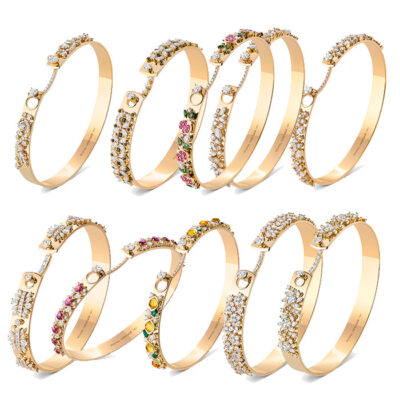Style
19 November 2023
Share
René Boivin and Suzanne Belperron, the inseparable pair
For a long time, the names of René Boivin and Suzanne Belperron were confused and even seen as adversarial. However, thanks to the unification of their archival collections, the situation has become calmer and clearer.
By Sandrine Merle.
In 1919, shortly after René Boivin’s death, his widow Jeanne hired a young draftswoman and model maker, Suzanne Vuillerme (Belperron), who became the co-director by 1923. In 1932, she resigned to take over the reins of the Bernard Hertz company. They shared geometric lines, arrangements of volutes, and similar spirals in their designs. Some suggested she left with her designs and some of the clientele. “Belperron continued to produce certain models considering them as her own creations, while on the other hand, Maison Boivin continued to exploit them,” explains Thomas Torroni-Levene, the guardian of the Maison Boivin since 2019. The archives do not mention any problem between the two parties.
In the absence of signatures and archives
The issue arose much later, in the 80s and 90s when the concept of intellectual property and attribution began to gain importance. Indeed, before 1976, neither house signed their jewelry! Without archives, it became difficult to distinguish a piece created by Suzanne Belperron for René Boivin from one made for Herz-Belperron. Even after 1932, the René Boivin style remained very Belperron-like, with her successor Juliette Moutard taking about a decade to establish her own style. The G&D master hallmark of was not sufficient to make a distinction, as this workshop sometimes worked for both. In the 80s and 90s, only Maison René Boivin, still active and fashionable, was talked about; Françoise Cailles even dedicated a book to it in 1994. Only a few major American or London dealers were interested in Suzanne Belperron (who died in 1983).
“Expertise, a real profession”: Sotheby’s Paris Conference
The consecration of Suzanne Belperron
Two events changed the situation and established the designer as one of the most talented of the 20th century. In 1987, at Sotheby’s historic sale, filmed by cameras from around the world, her jewelry was featured alongside that of the Duchess of Windsor. Her famous chalcedony set then made history (627,000 CHF). The second event happened in 2008 when Olivier Baroin discovered archives – which had been thought to have burned – in an apartment abandoned for over 20 years. With drawings, order books, plasters, and gouaches, he proved that “Suzanne Belperron breathed style into Boivin and that upon her arrival, René Boivin was working among others for the major jewelers.” He established a certification process and corrected the oversight of her contributions. His book in 2011 finally enshrined Suzanne Belperron, whose value soared as evidenced by the bracelet auctioned for USD 852,500 at Christie’s in 2018.
The Suzanne Belperron phenomenon
The pendulum swings back
Owned by Asprey and then Nathalie Choay, Maison Boivin catered to a prestigious clientele. Suddenly, in 2019, its archives reappeared, purchased by G. Torroni. “They were recently complemented by those of Mrs Cailles, thanks to the assistance of Mr Salit (her partner). It includes 3 stock books and the draft notebooks of Mr. Girard (director of the house from 1929 to 1985),” says a happy Thomas Torroni-Levene. For him, there was never a question of considering René Boivin and Suzanne Belperron as rivals. On the contrary: “the two houses had every interest in coming together, which is why I created a René Boivin committee with, among others, Olivier Baroin.” The two guardians now work together to cross-reference their information to provide as precise and fair attributions as possible, essential conditions for reassuring the markets. They represent the convergence of two houses that, without each other, might never have entered the annals of jewelry history.
Banner image: “Bibendum” ring in silver and moonstone made by Suzanne Belperron for herself (Sotheby’s sale May 14, 2012) – This model, designed by Suzanne Belperron, is found both in the archives of René Boivin and from Hertz-Belperron.
To know more about René Boivin, click here




















